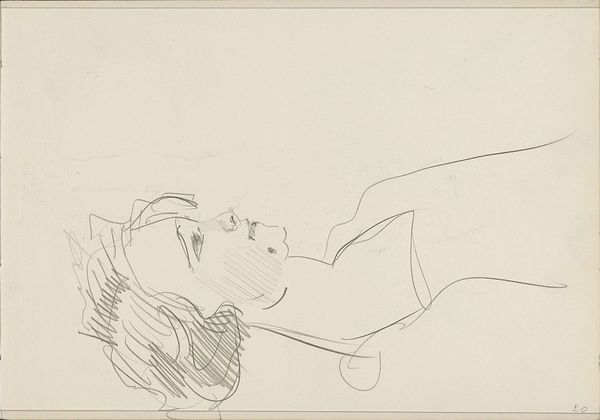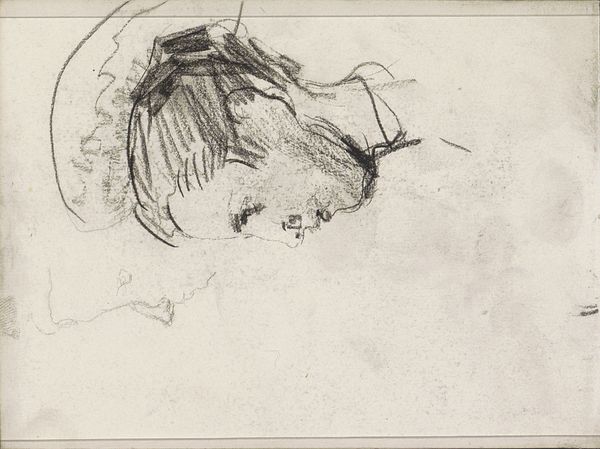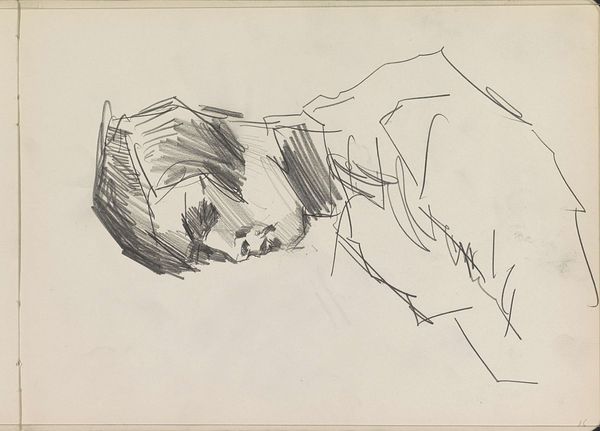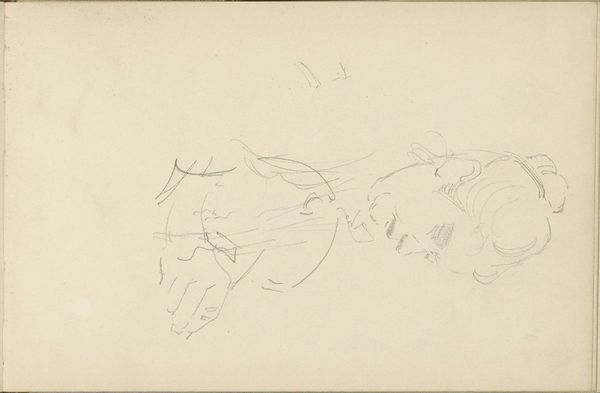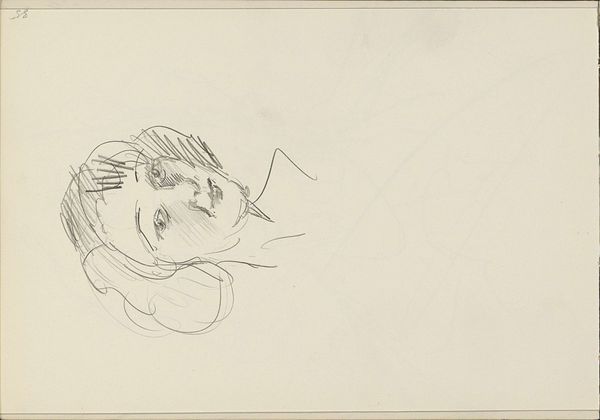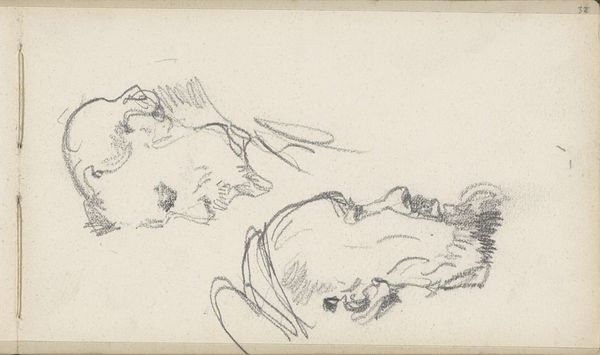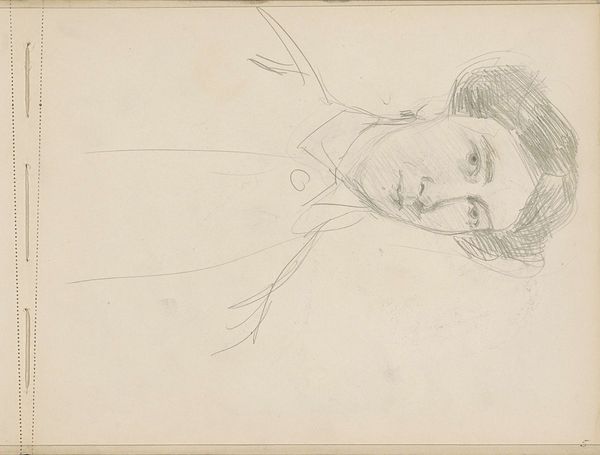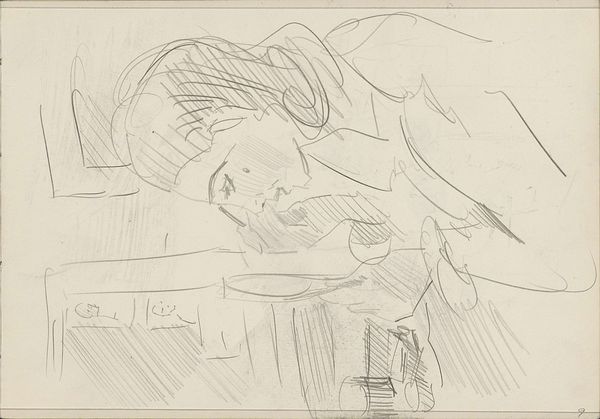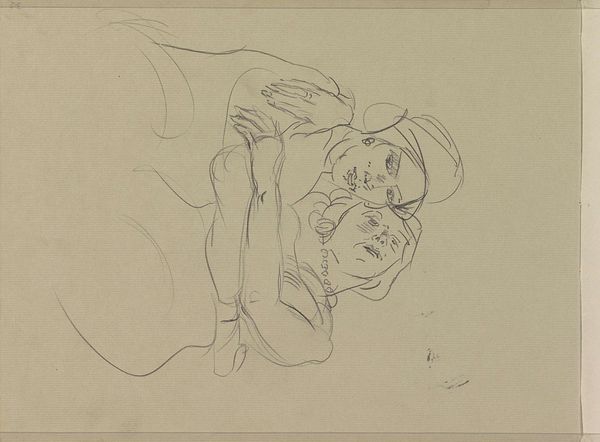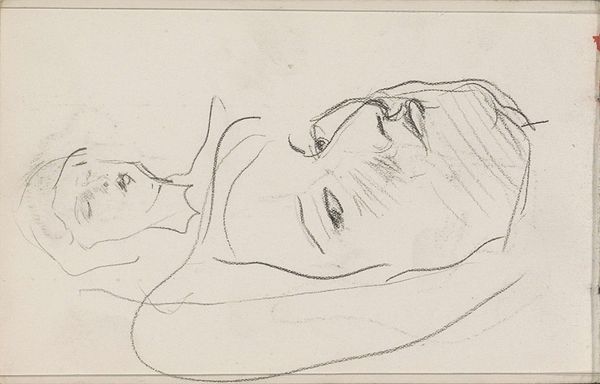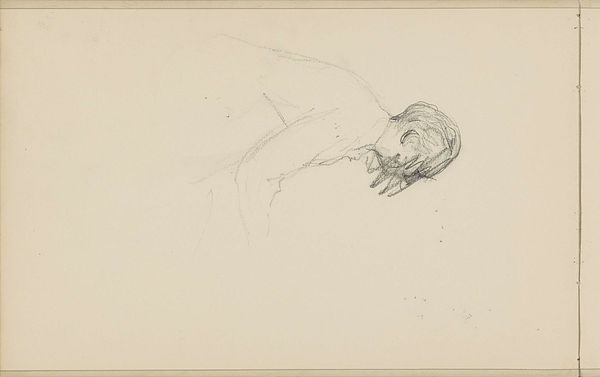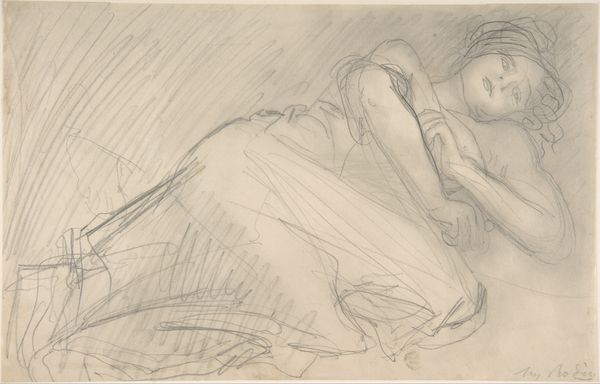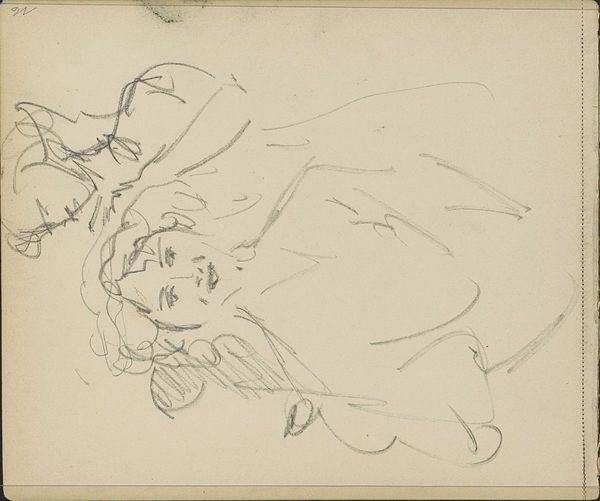
drawing, pencil, pen
#
portrait
#
drawing
#
imaginative character sketch
#
light pencil work
#
self-portrait
#
pencil sketch
#
figuration
#
personal sketchbook
#
idea generation sketch
#
sketchwork
#
ink drawing experimentation
#
pen-ink sketch
#
pencil
#
sketchbook drawing
#
pen
#
sketchbook art
Copyright: Rijks Museum: Open Domain
Curator: Here we have Isaac Israels' "Studieblad met gezichten en een vrouwenhoofd, in profiel", a sheet of studies depicting faces and a woman's head in profile, created sometime between 1875 and 1934. Editor: My first thought is how fleeting this feels. The lines are so sparse, almost as if he's trying to capture a fleeting thought rather than a concrete image. Curator: Exactly. It is interesting to consider these sketches within the broader context of Israels’ social circle, deeply embedded in the artistic milieu of the Hague School and later the Amsterdam Impressionism movement. We can consider how Israels positioned himself and his models in relation to that tradition of rapid observation. Editor: The rapid application makes me think of the availability and cost of materials too. Pen and pencil on paper suggest both the portability and disposability of the sketch; it's functional, part of a process rather than an end product. Were sketchbooks more democratic, used across class lines, and then later taken up by artists to convey the casual, unfinished quality that’s come to seem ‘modern’? Curator: The sketchbook became a kind of visual diary for many artists at that time. These weren’t intended for public display initially, but the access that we now have reveals insight into his practice, including the class dynamics, and that the modern look also had that kind of social signaling tied to it. Editor: It’s also the speed with which it can be executed. Consider the labour involved – quick studies capturing essential forms are incredibly economical both for the artist in terms of time and also with respect to materials themselves. Curator: Absolutely. What is interesting about Israels here is his documentation of everyday life but also the implicit performance within. He moves between observation and the constructed nature of identity. Editor: These figures are undeniably raw, reduced to almost architectural lines—what could that suggest? Curator: Well, to think about Israels within a larger socio-historical framework is to ask to what extent did the market embrace quick work. How much were those rough sketches shaped by those demands of the market or gallery? Editor: It's striking to consider how a focus on materials and the production process opens up questions not just about aesthetics but also about labour and the commercial side of art making. It changes how we read both art and social practices from the period. Curator: It definitely makes one rethink what we consider art and labor, and what gets put into museums and for what reasons. Editor: Indeed, and on that note, this little exercise shows us both the immediacy and the enduring social complexities held within even the simplest of sketches.
Comments
No comments
Be the first to comment and join the conversation on the ultimate creative platform.
